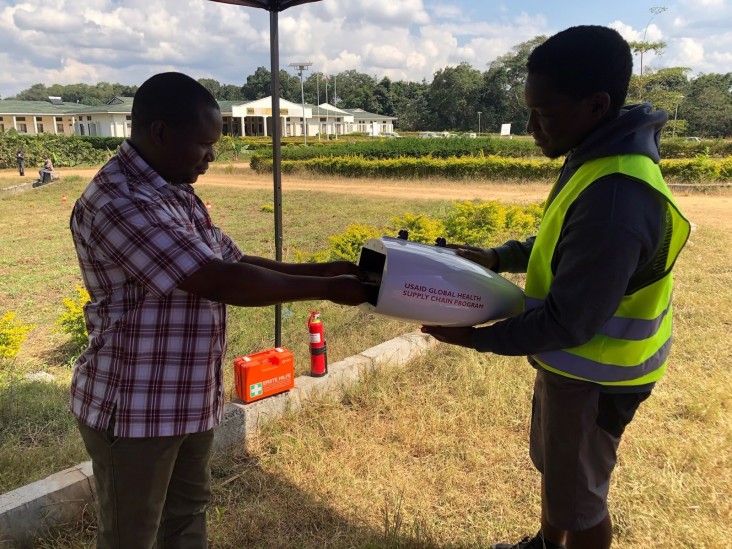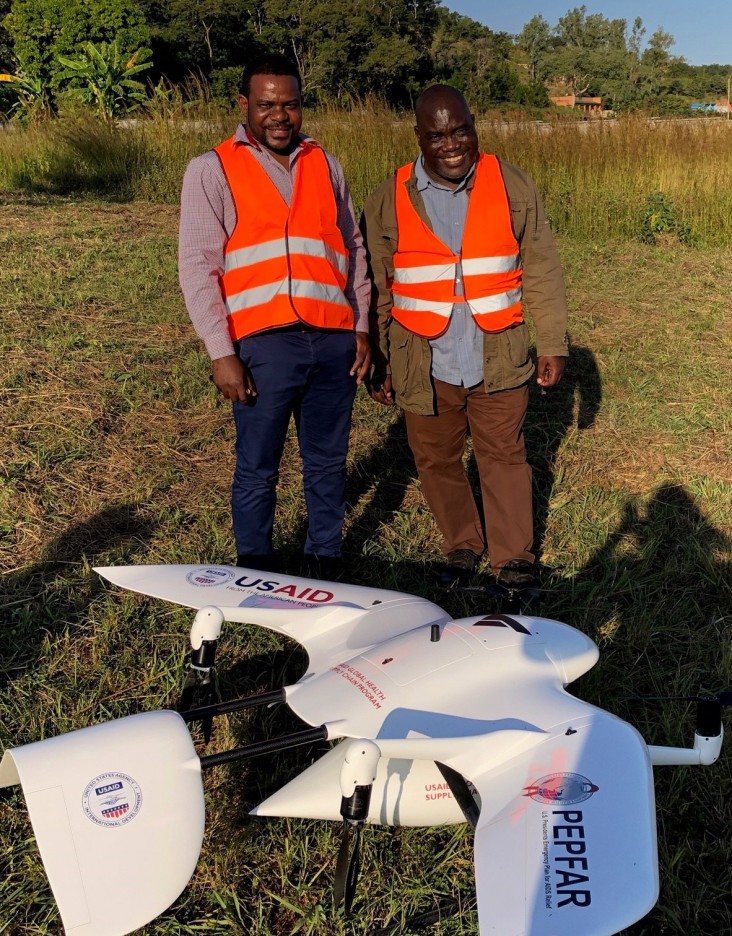Speeches Shim

How to get life-saving services and medical commodities to citizens living in remote areas is one of the biggest questions facing medical service providers the world over. In Malawi, many citizens who live in more remote locations must travel long distances to seek medical attention, have tests run, and/or obtain the medications that they need. There are times when these distances become a life and death matter. Given this, Malawi’s Ministry of Health (MOH) and USAID are exploring the use of aerial drones in a bid to give Malawi new options to increase the availability of and access to lifesaving health commodities, while filling significant service gaps in the public health supply chain.
Through a comprehensive unmanned aerial vehicle (UAV) integration activity design first piloted in Malawi, the USAID Global Health Supply Chain Program-Procurement and Supply Management (GHSC-PSM) project is using drone technology to increase service delivery of health commodities and transportation of laboratory samples to and from hard-to-reach areas, increasing patient result and treatment turnaround time. This can only happen in a country where the government is committed to working with partners to put all of the regulatory and practical systems in place to fully take advantage of drone technology.

The Government of Malawi (GoM) and MoH have been strong partners in both recognizing the possibilities that drones offer and working through the difficult processes to stand-up the technology. Working together, the GoM, USAID, and its GHSC-PSM project obtained the appropriate in-country approvals from the Department of Civil Aviation, secured a UAV manufacturing and flight operating partner, and then trained local staff and physicians on how drone technology can be used to pursue key medical service and supply outcomes. The first bidirectional delivery took place in July 2019. The successful flight carried viral load and early infant diagnosis laboratory results from Nkhata Bay District Hospital to the remote Island of Likoma, helping to provide faster diagnosis to patients.
This early success was followed-up with daily programmed flights in order to perfect operational systems and create new service and supply standards for medical practitioners on Likoma Island. This model of drone carries up to 10 pounds of payload at 500 feet over 50 miles of adverse terrain (view flight path) in under one hour, delivers and picks up cargo, and returns to base station. From July 15 to August 16, 2019, project staff completed 41 flights with medical cargo, such as diagnostic tests, test results, medical supplies, and medicines. Specifically, these flights facilitated the delivery of 77 viral load blood samples and 119 viral load results reports. Project crews are now flying the drone on this route twice a day, every day but Saturday.

Drone operations have the potential to be a breakthrough approach to achieving key health outcomes in inaccessible areas more rapidly and at a lower cost than other alternatives. Longer term, drone operations such as this will result in skills transfers and training opportunities for up and coming UAV operators and safety pilots. This will provide Malawi with an expanded pool of trained professionals in the drone industry, who can capitalize on the myriad opportunities to use UAVs for private sector and commercial innovations.

Comment
Make a general inquiry or suggest an improvement.